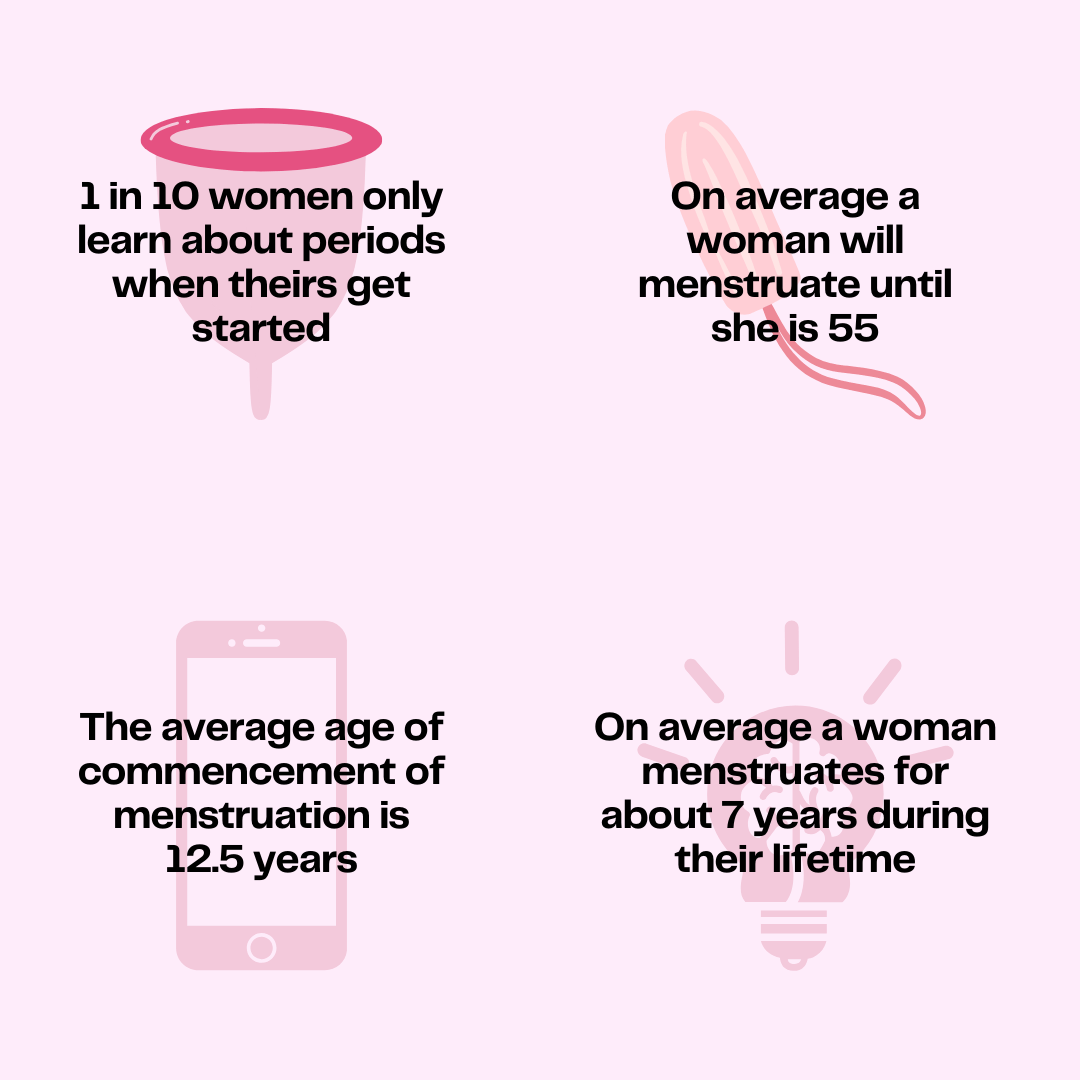How To Relieve Period Cramps Naturally
Table of Contents
Menstrual cramps, also known as dysmenorrhea, are a common yet often debilitating experience for many individuals during their menstrual cycles. While over-the-counter medications can provide relief, some people prefer to seek natural remedies to alleviate the discomfort. Natural methods not only offer a gentle approach but also come with fewer side effects and can contribute to overall well-being. In this blog, we’ll explore various natural techniques and lifestyle changes that can help you manage and reduce period cramps effectively. From dietary adjustments and herbal teas to exercise and mindfulness practices, discover how to embrace natural solutions to enhance your comfort and health during your menstrual cycle.
What causes period pain?
Period pain, or menstrual cramps, is primarily caused by the natural processes your body goes through during menstruation. Here’s a straightforward explanation of how this happens:
Prostaglandin production
During your menstrual cycle, the lining of your uterus builds up to prepare for a potential pregnancy. If no pregnancy occurs, this lining needs to be shed. To facilitate this, your body produces hormone-like substances called prostaglandins.
Uterine contractions
Prostaglandins cause the muscles in the walls of your uterus to contract. These contractions help the uterus shed its lining. The more prostaglandins your body produces, the stronger the contractions.
Restricted blood flow
Strong uterine contractions can temporarily reduce blood flow and oxygen to the uterus. This lack of oxygen can cause pain and cramping.
Pain sensation
The reduced blood flow and muscle contractions trigger pain receptors in the uterus, leading to the sensation of cramps.
How to tell if your period cramping is normal?
Period cramping is a common experience, but it can vary widely in intensity and duration. Here are some guidelines to help you determine if your period cramps are within the normal range or if they might indicate an underlying issue that requires medical attention:
Pain intensity
- Normal: Mild to moderate pain that is manageable with over-the-counter pain relief, such as ibuprofen or paracetamol.
- Abnormal: Severe pain that does not improve with medication, disrupts your daily activities, or requires stronger prescription pain relief.
Duration of cramps
- Normal: Cramps typically start one to two days before your period and last for two to three days.
- Abnormal: Cramps that begin well before your period starts or continue long after your period ends.
Impact on daily life
- Normal: You can go about your regular activities, perhaps with some discomfort.
- Abnormal: The pain prevents you from going to work, school, or participating in daily activities.
Associated symptoms
- Normal: Mild back pain, headaches, or gastrointestinal symptoms like bloating and nausea.
- Abnormal: Symptoms such as excessive bleeding, large blood clots, severe lower back pain, pain during intercourse, or bowel movements, and significant fatigue.
Response to treatment
- Normal: Cramps respond well to over-the-counter painkillers, heat application (like a heating pad), or other home remedies.
- Abnormal: Cramps persist despite these treatments or require frequent medical intervention.
Consistency over time
- Normal: Pain levels and patterns remain relatively consistent from month to month.
- Abnormal: Sudden changes in the intensity or pattern of your cramps, especially if they worsen over time.
When to seek medical advice
If your period cramps are severe, interfere significantly with your daily life, or come with other concerning symptoms, it’s important to consult with your GP. Conditions such as endometriosis, fibroids, adenomyosis, or pelvic inflammatory disease can cause abnormal menstrual pain and require specific treatments.
By paying attention to the intensity, duration, impact, associated symptoms, response to treatment, and consistency of your period cramps, you can better determine whether they are normal or if you should seek medical advice.

What natural remedies help with period pain?
Finding natural ways to alleviate period cramps can be both effective and beneficial for overall well-being. Here are eight natural remedies and how they help:
Heat therapy
- How it helps: Applying heat to the lower abdomen can relax the uterine muscles, increase blood flow, and reduce pain. Heat therapy works similarly to a warm bath or heating pad.
- Example: Use a heating pad or hot water bottle on your lower abdomen for 15-20 minutes. Alternatively, take a warm bath.
Exercise
- How it helps: Physical activity releases endorphins, which are natural painkillers. Exercise also improves blood circulation and can help reduce the severity of cramps.
- Example: Engage in light cardio, such as walking or cycling, or practice yoga poses that target the pelvic area, such as Child’s Pose or Cat-Cow Stretch.
Herbal teas
- How it helps: Herbal teas such as chamomile, ginger, and peppermint have anti-inflammatory properties and can soothe muscle contractions. These teas can also help with relaxation and reducing stress.
- Example: Drink a cup of chamomile tea before bed, or ginger tea in the morning to help ease cramps and reduce inflammation.
Dietary changes
- How it helps: Eating a balanced diet rich in fruits, vegetables, whole grains, and lean proteins can reduce inflammation and bloating. Omega-3 fatty acids, found in fish and flaxseeds, can also help reduce menstrual pain.
- Example: Incorporate foods like salmon, walnuts, leafy greens, and berries into your diet. Avoid processed foods, caffeine, and high-sodium items.
Hydration
- How it helps: Drinking plenty of water can help prevent bloating and ease cramping. Staying hydrated helps your muscles stay relaxed and reduces the risk of water retention.
- Example: Aim to drink at least 8 glasses of water a day. You can also hydrate with herbal teas or water-rich fruits like cucumbers and watermelon.
Essential oils
- How it helps: Essential oils such as lavender, clary sage, and rosemary have analgesic and anti-inflammatory properties. Massaging these oils into the abdomen can relieve cramps.
- Example: Mix a few drops of lavender or clary sage oil with a carrier oil like coconut oil and gently massage your lower abdomen.
Acupuncture
- How it helps: Acupuncture involves inserting thin needles into specific points on the body to balance energy flow. It can help reduce pain and inflammation associated with menstrual cramps.
- Example: Schedule a session with a licensed acupuncturist to target areas associated with menstrual pain relief.
Magnesium supplements
- How it helps: Magnesium helps regulate muscle and nerve function, and can reduce muscle spasms and pain. Increasing magnesium intake can help alleviate cramps.
- Example: Take a daily magnesium supplement (consult your healthcare provider for the appropriate dosage) or eat magnesium-rich foods like almonds, spinach, and dark chocolate.
Massage therapy
- How it helps: Gentle massage can improve circulation, reduce muscle tension, and promote relaxation, which helps alleviate cramps.
- Example: Use circular motions to massage your lower abdomen with a soothing oil like coconut or olive oil for 5-10 minutes.
Turmeric
- How it helps: Turmeric contains curcumin, which has strong anti-inflammatory properties and can help reduce menstrual pain.
- Example: Add turmeric to your diet by drinking turmeric tea or incorporating it into meals like curries and soups.
Warm beverages
- How it helps: Warm beverages can help relax the muscles and improve blood flow, reducing cramps and bloating.
- Example: Drink warm herbal teas like chamomile, ginger, or cinnamon tea to soothe cramps.
How The Family Chemist can help
At The Family Chemist, we understand the importance of effective pain relief for menstrual cramps. Two commonly used medications for this purpose are Mefenamic Acid and Naproxen. Here’s how each medication works and their benefits:
Mefenamic Acid
Overview:
- Mefenamic Acid is a nonsteroidal anti-inflammatory drug (NSAID) known for its effectiveness in reducing pain and inflammation.
Mechanism of Action:
- It works by inhibiting the production of prostaglandins, chemicals in the body that cause inflammation and pain during menstruation.
Benefits:
- Provides relief from moderate to severe menstrual cramps.
- Helps reduce the intensity and duration of menstrual pain.
- Can be taken at the onset of cramps or as prescribed by our pharmacist.
Naproxen
Overview:
- Naproxen is another NSAID widely used for its anti-inflammatory and analgesic properties.
Mechanism of Action:
- Similar to Mefenamic Acid, Naproxen also works by inhibiting prostaglandin synthesis, thereby reducing pain and inflammation.
Benefits:
- Effective in relieving menstrual cramps and other types of pain, such as headaches and muscle aches.
- Provides longer-lasting relief compared to some other NSAIDs.
- Available in various formulations, including tablets and liquid gels for easy administration.

